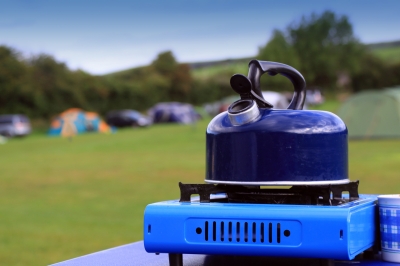
 If you’re one of the millions who lost power during hurricane Sandy, and since then have been using a generator or other alternative mode of power or heat, please note-carbon monoxide poisoning has sickened dozens and killed at least 10 people in areas hit hard by the storm.
If you’re one of the millions who lost power during hurricane Sandy, and since then have been using a generator or other alternative mode of power or heat, please note-carbon monoxide poisoning has sickened dozens and killed at least 10 people in areas hit hard by the storm.
According to USA Today, increased generator use after the storm has increased the number of people affected by carbon monoxide poisoning. That isn’t the only danger. Some people have become sick from burning charcoal briquettes in their houses and using fireplaces with blocked flues.
Carbon monoxide is an odorless gas that binds to hemoglobin in red blood cells. At high levels, it prevents the transmission of oxygen throughout the body, acting as a sort of cellular suffocation.
As so many people cope with power outages, here are a few guidelines to make sure your alternate form of energy or heat does not cause you any health problems.
In the meantime, if you or someone around you experiences any of the following symptoms, move to an area of better ventilation (out of the house), and call for help right away.
- Nausea
- Headaches
- Dizziness
- Vomiting
- Unconsciousness
Long-term exposure can also cause weakness, tremors, confusion, and paranoia.
Generator Safety
When using a generator, the key is proper ventilation. “We have people putting generators in their basements and garages,” said Amy Hanolan-Fontana, community education specialist. “Even if the garage or basement doors are open, that’s still not enough ventilation.”
In fact, two 19-year olds died from carbon monoxide poisoning because the generator was too close to the house, while two other people died because of generators in the basement and garage.
The New Jersey Poison Information and Education System recommends placing the generator outside, at least 20 feet from any home, to allow plenty of open air circulation. If the machine is too close to the house, carbon monoxide can get sucked in from outside.
Also, since carbon monoxide is odorless and colorless, there’s no way to detect it with human senses. You can, however, get a carbon monoxide detector with a battery backup, which you can find in hardware and home improvement stores.
Propane Stoves
Propane stoves used indoors (or smaller camp stoves) can also increase risk of carbon monoxide poisoning. Propane burns clear without producing visible smoke, so it can also be difficult to detect any problems. Propane tanks that are damaged in some way are more risky.
Check for visible structure tank damage, including external appliance venting and vent caps, and never use a camp stove in a closed room.
Other Sources of Heat and Power
Charcoal grills and other gasoline or charcoal-burning devices in the home, basement, or garage can all increase risk of carbon monoxide. Follow these additional safety tips to protect yourself and your family during this challenging time.
- Never run a generator in an enclosed space, even if the doors and windows are open, unless a professional installed and vented it.
- If you’re looking for a heat source for cooking, never use a charcoal grill, hibachi, lantern, or portable camping stove inside a home, tent, or camper.
- Get a battery operated carbon monoxide alarm. It’s good to have in the home during any power outage.
- Keep flues and chimneys clean and free of debris, or don’t use them until you get a chance to clean them.
- Keep the furnace air intake clear and unobstructed. If your furnace is housed in a small room, make sure it gets adequate fresh air by installing louvered doors or ventilating grills.
- Never use a gas range or unvented space heater (propane, gas, oil, or kerosene) to heat your home.
- Never use a barbecue grill inside your home, on an enclosed porch, or in your garage.
If you have other tips for surviving the power outage, please share!
Picture courtesy Simon Howden via freedigitalphotos.net.
Sources
Gary Stoller, “After Sandy, Carbon Monoxide Becomes a Big Killer,” USA Today, November 2, 2012, http://www.usatoday.com/story/news/nation/2012/11/02/carbon-monoxide-deaths-hurricane-sandy/1677581/?sf6998254=1–.
“Governor Declares Carbon Monoxide Safety and Awareness Week; Urges Protection Against CO Poisoning,” The Sacramento Bee, November 1, 2012, http://www.sacbee.com/2012/11/01/4954060/governor-declares-carbon-monoxide.html.

